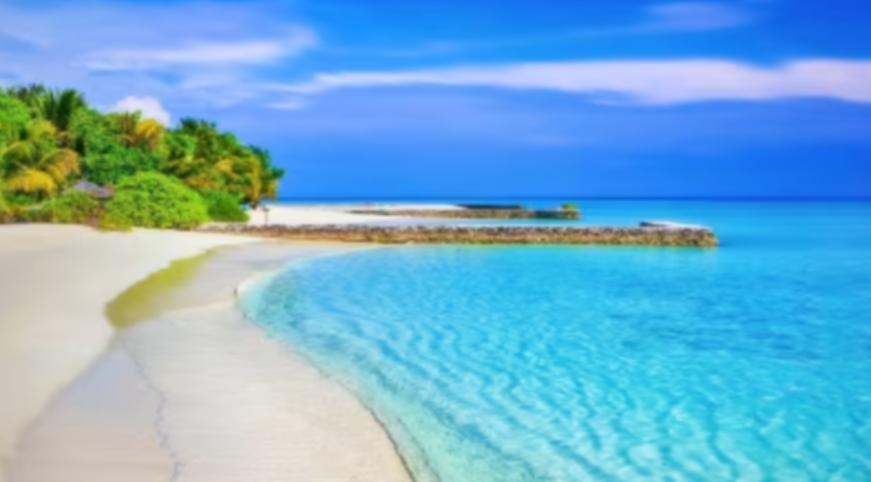
On 31 March 2022, the Japan International Cooperation Agency (JICA) signed a grant agreement with the Government of India, to provide aid of up to 4,016,000,000 Japanese Yen (approximately US$133 million) for a power supply project in India’s Andaman and Nicobar Islands (ANI). The aim of this investment is to stabilise the power supply in South Andaman by utilising power generated from renewable energy sources through equipment and facilities such as storage battery system and grid interconnection cassette. This project is expected to be completed by February 2024, and is being executed by the Andaman and Nicobar Administration to reduce the carbon footprint in the islands by replacing diesel-based power generation with clean renewable energy. It can thus be expected to contribute towards ANI’s power development policy plan, improve the industrial competitiveness of the island as well as enhance its the military capacity. This development comes as India itself is keen to develop the islands and harness its strategic potential, after years of governing it with a protectionist hand.
Separating the Bay of Bengal from the Andaman Sea, the ANI alone makes up for 30 percent of India’s Exclusive Economic Zones (EEZ). The islands are also home to some of the world’s most primitive and vulnerable tribal groups along with a diverse array of flora and fauna. It is, therefore, not surprising that after its independence in 1947, India sought to conserve the islands in their “existential setting against the pulls of exploitative enticements” thus treating it with ‘benign neglect’. This orthodoxy in governance, reinforced over the years by legal pronouncements and the efforts of environmental lobbies, kept the islands away from the surge of development sweeping India’s mainland. For many years, only 7 percent of the entire island chain had been developed, with the rest demarcated as protected areas. However, the rising aspirations of the ANIs residents and indeed the changing geopolitical scenario has recalled the Indian government’s attention to the islands, and it has been realised that there is ample scope to rationalise economic progress with environmental conservation. A shift is, therefore, increasingly being noticed in the ANI’s administration, as a more flexible approach is being adopted in its governance.
The rising aspirations of the ANIs residents and indeed the changing geopolitical scenario has recalled the Indian government’s attention to the islands, and it has been realised that there is ample scope to rationalise economic progress with environmental conservation.
A number of developmental initiatives in the ANI have accordingly been undertaken in recent years, such as; the INR100,000 million plan which was announced in 2015 to develop the ANI into India’s first maritime hub; Prime Minister Modi’s first visit to the islands in 2018 to inaugurate several development projects; promulgation of the Island Coastal Regulation Zone Notification in 2019, allowing land reclamation for ports, harbours, and jetties facilitating luxury tourism in the islands; the inauguration of the Chennai-Andaman and Nicobar undersea internet cable to provide high-speed internet connection to seven remote islands of the ANI chain in 2020; and the announcement to build a transhipment port in the Great Nicobar island in 2020. The investment by JICA to improve ANI’s power supply as mentioned above is the most recent of such developmental initiatives. The uniqueness of this initiative lies in the fact that it is the first time a foreign power has been allowed to invest in these strategically important islands.
Indeed, the ANI has often been referred to as one of the “most strategically located island chains of the world,” as its geographical layout bestows upon its potential to maintain the freedom of navigation in its surrounding waters. Located almost at the confluence of the Indian and the Pacific Ocean, the ANI lies west of the Strait of Malacca and is located in close proximity to it. This Strait is critical for energy requirements of most East Asian countries, which explains China’s anxiety over its ‘Malacca Dilemma’. Choking this solitary strait through which China carries its oil imports would severely affect its economic development. That apart, the ANI also straddles the Preparis Channel, the Duncan’s Passage, the Ten Degree Channel, and the Six Degree Channel; important shipping routes for India as well as other shipping destined for East and Southeast Asia. Therefore, it creates a number of chokepoints close to one of the world’s busiest shipping lanes—the East–West shipping route, passing just eight nautical miles below the ANI. As China’s assertive presence grows in the Bay, and India attempts to secure its own foothold in these waters as well as maintain a stable Indo-Pacific, the strategic importance of the ANI has become greater than ever before.
Choking this solitary strait through which China carries its oil imports would severely affect its economic development.
Japan shares India’s aspirations with its policy of ‘Free and Open Indo-Pacific’. Consequently, their partnership that manifests through JICA’s investments, has been oriented towards this strategic convergence. JICA has been partnering with the Union Government of India as well as the various state governments to assist the country in poverty alleviation, investment promotion, and infrastructure development. Today, it is India’s largest bilateral donor agency, and India has been the top recipient of its aid since 2003. This collaboration ranges from India’s domestic projects such as the Delhi–Mumbai Industrial Corridor and the various projects in India’s North East Region (NER) to Japan–India collaborative projects in Africa. In 2020, the two countries have also signed an Agreement Concerning Reciprocal Provision of Supplies and Services between their armed forces. Indeed, this agreement and Japan’s involvement in the NER is an indication of India’s confidence in Japan, as it is a sensitive border region. JICA’s recent announcement of collaboration in the Andaman and Nicobar Islands is a further reflection of this trust. It stems from the approval of Japan’s first-ever Official Development Assistance (ODA) project in the ANI in March 2021, which also stressed on the strategic geopolitical location of the islands for an open Indo-Pacific.
Having once occupied the Andaman and Nicobar Islands from 1942–1945, Japan is, indeed, well aware of their strategic significance in the Bay. As a part of the Indo-Pacific the Bay of Bengal is growing in its strategic importance with critical sea routes passing through it and its wealth of hydrocarbon reserves. Like China, which wants to secure its position in the region, Japan too is aware of the changing geopolitical realities. To enhance its presence across the Indo-Pacific, it is, thus, increasingly trying to develop linkages with the Bay littorals and particularly other South Asian countries. This explains JICA’s investments in infrastructure projects across the Bay of Bengal, providing more economically feasible and transparent alternatives to Chinese projects. It is, therefore, indirectly aimed towards ascertaining Japan’s own security presence in the Bay, more so as its Constitution restrains it from extending any overt military assistance to other countries.
To enhance its presence across the Indo-Pacific, it is, thus, increasingly trying to develop linkages with the Bay littorals and particularly other South Asian countries.
However, it would be an oversimplification to assume India–Japan’s partnership in the Bay as being singularly directed to counter China. Rather, it is an execution of their shared vision of maintaining a stable and prosperous Indo-Pacific, as strengthening the ANI will help in maintaining better freedom of navigation for all powers traversing this maritime space. Furthermore, the ANI’s pristine conditions harbours tremendous potential for the tourism industry, for which connectivity and infrastructural development is necessary. Japan’s investments in this front thus bear commercial promise for the country. Above all, India–Japan collaboration in the ANI is a testament of the growing trust between the two countries; a factor which will be critical in determining the Bay of Bengal as well as Indo-Pacific’s strategic future.
The views expressed above belong to the author(s). ORF research and analyses now available on Telegram! Click here to access our curated content — blogs, longforms and interviews.




 PREV
PREV


